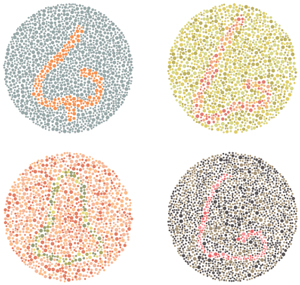by Joel D. Mainland PhD, Louise Slade Assistant Member at the Monell Chemical Senses Center, Philadelphia

Why is it that we all know that red, green, and blue are primary colors, but nobody knows a set of primary odors? Why is it that every smartphone user can now pull out their phone, take a picture, send it to a friend halfway across the world nearly instantaneously, archive it nearly indefinitely, and look at it repeatedly with no degradation using only a device connected to a power source, but none of this is currently possible in olfaction?
One reason is that color vision uses three types of receptors to detect all of the colors we see. Taste comes in an order of magnitude higher – with somewhere around 40 receptors. Olfaction is yet another order of magnitude higher – humans have over 400 types of odorant receptors. A major limitation in the field is that we don’t know the basic response properties of these receptors, and therefore we don’t have a way to identify primary odors and map the perceptual space.
We have used ‘high-throughput’ screening to interrogate the response of human olfactory receptors to a broad set of odors. At the time we started this screen, only 21 of the ~400 human olfactory receptors were “deorphaned” receptors, meaning they had a published ligand. In other words, over 94% of the human olfactory receptors had never been shown to respond to an odor! We previously used this data to find ligands for a number of orphan receptors (see the article in Nature Neuroscience), and then went on to show that although you and I both have around 400 types of olfactory receptors, about 30% of yours will show functional differences when compared to mine.
In our recent Data Descriptor article at Scientific Data, we published the full data set with the hope that someone will find new uses for these data that we haven’t yet thought of – or that we have thought of, but haven’t been able to solve ourselves.

Just as differences in photoreceptor genes determine who can see the cartoon noses in these images, differences in olfactory receptor genes determine how individuals perceive the world of smell.
One major goal is to understand how the olfactory system encodes odors. We have digitized images and sounds, which has led to incredible changes in our lives. Consumers have gone from listening to only live music, to the dissemination of sheet music, to radio and cassettes, to CDs, and then to streaming music. This disruption has led to both increased piracy and faster and more independent dissemination of new talent. If olfaction is successfully digitized it will profoundly change both olfactory science and the flavor and fragrance industry. Currently, it is extremely difficult to standardize an odor across laboratories. Digitization will allow us to precisely specify an odor, which will allow us to electronically store and transmit fragrances, as well as patent fragrances in a meaningful way.
Many are convinced that even if this is possible, it is something that very few of us actually want, which reminds me of a quote attributed to Jack Warner, president of Warner Bros. Studios, when asked about “talking pictures”: “They fail to take into account the international language of the silent pictures, and the unconscious share of each onlooker in creating the play, the action, the plot, and the imagined dialogue for himself.” While Smell-o-vision may have flopped in the 1960s, I have little doubt that digitizing the richness of the olfactory experience will add new depth to art, commerce, and science.